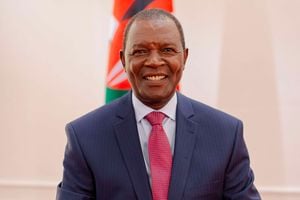Empowering silence: A call to action for inclusive education in Kenya

Teenage students in a classroom. The Universal Declaration of Human Rights, Article 26, asserts the right to education.
What you need to know:
- 1.5 million Kenyan children of school-going age are unable to attend due to poverty.
- The plight of these children has spurred national and global conversations, prompting governmental and non-governmental organizations to intensify efforts in addressing the pressing need for education
Education stands as a cornerstone in the holistic development of children, fostering an equitable platform by instilling vital life skills, nurturing passions, paving the way for career growth, and championing equality.
Right to education
The Universal Declaration of Human Rights, Article 26, asserts the right to education, emphasising its role in the complete development of the human personality.
Yet, a staggering 57 million children worldwide still don’t have access to this fundamental right, with 1.5 million Kenyan children of school-going age unable to attend due to poverty.
Over the years, the plight of these children has spurred national and global conversations, prompting governmental and non-governmental organisations to intensify efforts in addressing the pressing need for education. While progress is evident, a critical aspect that demands attention is the educational gap faced by children with disabilities, particularly those with hearing impairments.
Hearing loss
Approximately 6.3% of the Kenyan population experiences hearing loss, with 900,000 profoundly deaf individuals, including 250,000 school-age children, of whom only 25,000 have access to education.
This statistic underscores the existing gap, stemming from challenges such as limited access to hearing aids, insufficient support and information for caregivers, societal stigma surrounding hearing impairment, and a scarcity of trainers for Kenya Sign Language.
Persons living with disabilities
To champion a comprehensive solution, all relevant stakeholders must be mobilised. Governmental agencies responsible for Persons Living with Disabilities should explore continued curriculum adjustments, embedding sign language, and ensuring every school accommodates children with hearing impairments with adequately trained educators.
Non-governmental agencies must persist in advocating for reforms within and beyond government spheres, with corporate responsibility activities delving deeper into supporting children with hearing impairments. Highlighting the plight of hearing-impaired children by both governmental and non-governmental agencies is crucial for dismantling the stigma surrounding the condition and providing these children with equal opportunities in life.
Noteworthy progress has been made, especially from a policy perspective, with significant efforts made towards including the Kenya Sign Language as a third language in all Kenyan institutions. The Kenya Society for Deaf Children has been instrumental in these advancements, lobbying for the inclusion of deaf children in national examinations and influencing curriculum adjustments based on performance data.
Empower silence
The Kenya Society for Deaf Children (KSDC), is on a commendable mission to "Empower Silence." Recognizing the isolating nature of hearing impairment, KSDC believes that, with proper support, children with hearing impairments can lead normal lives.
Through ongoing programs and partnerships, such as those with the Ministry of Education and other non-governmental partners, KSDC focuses on educating caregivers, engaging communities for family-level support, building the capacity of educators, lobbying for curriculum improvements, providing hearing aids, offering advisory services, and collecting crucial data.
While progress has been made, there is still a long journey ahead for all stakeholders to achieve inclusion aligned with the UN sustainable development goals.
The responsibility lies with everyone to heed this call and reinvigorate the inclusion conversation, ensuring that deaf children are equally represented in discussions about people living with disabilities. The goal is to empower silence, recognizing and supporting those who have long endured in silence.
The author is the CEO, Kenya Society for Deaf Children




